
Greater Queens Podiatry, PLLC
 (718) 229-0222
(718) 229-0222
 (718) 229-0222
(718) 229-0222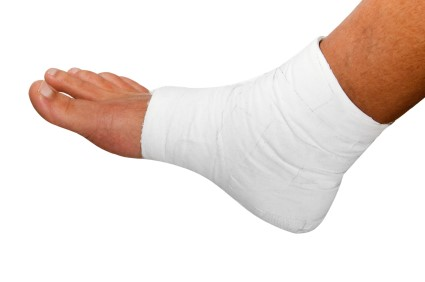 Buffalo Bills wide receiver Sammy Watkins complained of pain in his left foot earlier in the offseason. After having his foot checked out, it was revealed that the pain he felt was due to a stress fracture. Watkins is recovering from foot surgery and says he is excited to get rid of his walking boot and resume normal activity.
Buffalo Bills wide receiver Sammy Watkins complained of pain in his left foot earlier in the offseason. After having his foot checked out, it was revealed that the pain he felt was due to a stress fracture. Watkins is recovering from foot surgery and says he is excited to get rid of his walking boot and resume normal activity.
Activities where too much pressure is put on the feet can cause stress fractures. To learn more, contact Dr. Nicholas Megdanis from Greater Queens Podiatry PLLC. Our doctor can provide the care you need to keep your pain free and on your feet.
Dealing with Stress Fractures of the Foot and Ankle
The Stress Fractures occur on the foot and ankle when muscles in these areas weaken from too much or too little use. Then the feet and ankles lose support when walking or running from the impact of the ground. Since there is no protection the bones receive the full impact of each step. The stress on the feet causes cracks to form in the bones, thus called stress fractures.
What are Stress Fractures?
tress fractures occur frequently in individuals whose daily activities cause great impact on the feet and ankles. Stress factors are most common among:
-runners
-people affected with Osteoporosis
-play tennis or basketball
-gymnastics
-high impact workouts
Symptoms
Pain from the fractures occur in the area of the fractures, and can be constant or intermittent. It will often cause sharp or dull pain with swelling and tenderness. Engaging in any kind of activity which involves in high impact will aggravate pain.
If you have any questions please feel free to contact one of our offices located in Bayside, New York. We offer the newest diagnostic and treatment technologies for all your foot and ankle needs.
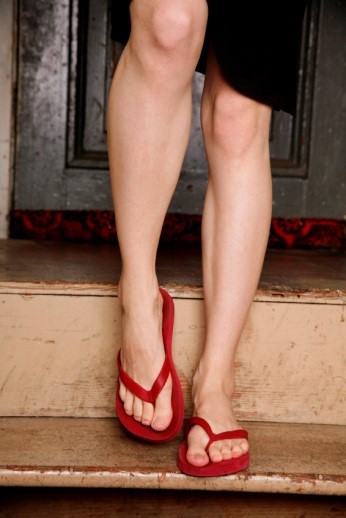 Why are flip-flops not considered suitable footwear? The answer lies in the fact that flip-flops are lacking arch support because they are flat, which can lead to extra stress on your feet. Wearing flip-flops for long periods or habitually also makes our feet more prone to ankle sprains. “Improper foot support can cause the knees to turn in, pelvis misalignments, and even cause poor posture.” It is recommended that you instead look for shoes that have good arch support, thick soles, and good traction.
Why are flip-flops not considered suitable footwear? The answer lies in the fact that flip-flops are lacking arch support because they are flat, which can lead to extra stress on your feet. Wearing flip-flops for long periods or habitually also makes our feet more prone to ankle sprains. “Improper foot support can cause the knees to turn in, pelvis misalignments, and even cause poor posture.” It is recommended that you instead look for shoes that have good arch support, thick soles, and good traction.
Flip-flops are not always the best choice of footwear. If you have any questions concerning the feet, contact Dr. Nicholas Megdanis from Greater Queens Podiatry PLLC. Our doctor will assist you with all of your foot and ankle needs.
Flip-Flops and Feet
When the weather starts warming up, people enjoy wearing flip-flops. Flip-flops are comfortable, stylish, and easy to slip on and off, perfect for any summer beach goer. However, these shoes can cause harm to the feet.
How Can Flip-Flops Affect Me Long-Term?
Ankle problems
Hip problems
Lower back problems
Pain in the balls of the feet
Problems with foot arches
Changes in the way you walk
Are there injuries associated with flip-flops?
Yes. Since flip-flops are relatively weak and do not provide the same amount of support as sneakers, people who wear flip-flops are more susceptible to injuries. On top of that, the open nature of the shoe makes your feet more prone to other problems, such as cuts and even infections. Common injuries and ailments include:
Sprained ankles
Blisters
Infections
Cuts and Scrapes
I like wearing flip-flops, are there safe alternatives?
When buying flip-flops, try to find ones that have sturdy soles and are made of high quality materials that will support for your feet. These flip-flops will cost more, but will also last longer as a result.
If you have any questions, please feel free to contact our office located in Bayside, New York. We offer the newest diagnostic and treatment technologies for all your foot and ankle needs.
Flip-flops are often a popular choice of footwear for many people. Flip-flops allow your feet to breatheand give your toes the freedom of movement. They are easy to slip on and can be worn with virtually any style of clothing. Flip-flops, however, despite their many benefits, can be detrimental for your foot health.
Despite their comfortableness, frequently wearing flip-flops can create problems in the lower body over time. Issues mainly stem from the fact that people walk differently in flip-flops compared to other footwear, such as sneakers. This is due to a change in one’s natural gait, which therefore creates stress in different parts of the body while hindering the body’s natural posture. Problems can also arise in the arches and balls of the feet. Flip-flops provide little to no support to these areas.
Aside from long-term problems, flip-fops can also create short-term issues as well, such as ankle sprains and blisters. Weak materials that are flexible and bendable are generally used to manufacture flip-flops. These materials make its wearers prone to both tripping and injuring their ankles.Flip-flops can create blisters as the material rubs against the foot. People are much more at risk for infection while wearing flip-flops due to their openness. This also makes it easier to scrape and cut the foot since there is a lack of protection. If these cuts are left untreated and uncovered, the risk then becomes greater.
To prevent the aforementioned occurrences, purchase a pair of flip-flops that offer significant protection. The soles of the flip-flops should not be floppy, but sturdy and firm, and should not significantly bend or wiggle when lifted from the floor. Flip-flops made of high-quality materials will not be affected by this problem. While higher quality flip-flops may be more expensive, they will last longer and provide better protection compared to a cheaper pair. Brand name flip-flops sold from a quality manufacturer are a dependable option.
There is no problem in wearing your favorite pair of flip-flops so as long as you do not wear them daily or for extended periods of time. Flip-flops should be replaced every 3-4 months to ensure that they provide your feet with the best protection.
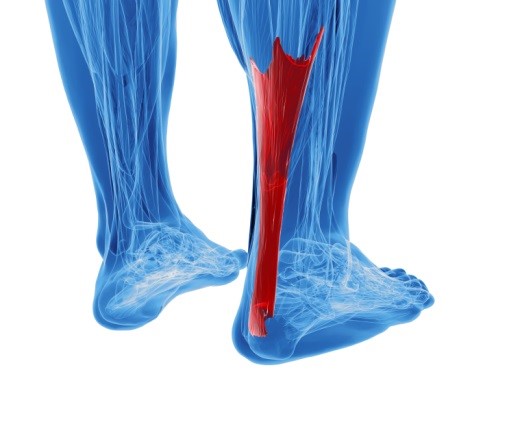 High-contact sports and sports that are strenuous such as lacrosse can lead to the onset of foot conditions such as heel pain. Sever’s disease is one particular condition associated with heel pain, described as “an inflammation of the growth area (heel plate) of the heel bone which has not completely matured, or closed together, and has developed in two parts.” Sever’s disease occurs most commonly in adolescent athletes from the ages of 10 to 15. The pain begins in the back of the heel, and can be caused by factors such as abnormal pronation of the feet, ill-fitting shoes, and improper use of the feet.
High-contact sports and sports that are strenuous such as lacrosse can lead to the onset of foot conditions such as heel pain. Sever’s disease is one particular condition associated with heel pain, described as “an inflammation of the growth area (heel plate) of the heel bone which has not completely matured, or closed together, and has developed in two parts.” Sever’s disease occurs most commonly in adolescent athletes from the ages of 10 to 15. The pain begins in the back of the heel, and can be caused by factors such as abnormal pronation of the feet, ill-fitting shoes, and improper use of the feet.
Anyone can wind up suffering from heel pain. For more information, contact Dr. Nicholas Megdanis from Greater Queens Podiatry PLLC. Our doctor will treat your foot and ankle needs.
Causes of Heel Pain
● Heel pain is often associated with plantar fasciitis. The plantar fascia is a band of tissues that extends along the bottom of the foot. A rip or tear in this ligament can cause inflammation of the tissue.
● Achilles tendonitis is another cause of heel pain. Inflammation of the Achilles tendon will cause pain from fractures and muscle tearing. Lack of flexibility is also another symptom.
● Heel spurs are another cause of pain. When the tissues of the plantar fascia undergo a great deal of stress, it can lead to ligament separation from the heel bone, causing heel spurs.
Why Might Heel Pain Occur?
- Wearing ill-fitting shoes
- Wearing non-supportive shoes
- Weight change
- Excessive running
Treatments
Heel pain should be treated as soon as possible for immediate results. Keeping your feet in a stress free environment will help. If you suffer from Achilles tendonitis or plantar fasciitis, applying ice will reduce the swelling. Stretching before an exercise like running will help the muscles. Using all these tips will help make heel pain a thing of the past.
With the advancements in technology and greater knowledge of how muscles and joints work, physical therapists can turn things around dramatically.
If you have any questions, please feel free to contact our office located in Bayside, New York. We offer the newest diagnostic and treatment technologies for all your foot and ankle needs.
Have you ever gotten up from a chair or out of bed in the morning, and upon taking that first step, feel like your heel has stepped on a tack? Many people experience a feeling of sharp pain which radiates into their arch from their heel and which does not allow them to put their heel on the floor. Sometimes they need to sit back down, stand only on their toes and use the wall for balance. If you can take a few steps, it seems to go away and lessens, allowing you then to resume your activity. Later, throughout your day and after a period of rest, it can happen again. If this sounds familiar you may be suffering from your first attack of heel pain.
Heel pain is a debilitating condition that affects day to day activities. Running and walking both causes stress on the heel because the heel is the part of the foot that hits the ground first. This means that the heel is taking on your entire weight. Diagnosis and treatments for heel pain can be easily found through your podiatrist.
Plantar Fasciitis
One of the main causes of heel pain is a condition known as plantar fasciitis. The plantar fascia is a band of tissue that extends along the bottom of the foot, from the toe to the bottom of the heel. A rip or tear in this ligament can cause inflammation of these tissues, resulting in heel pain. People who do not wear proper fitting shoes are often at risk of developing problems such as plantar fasciitis. Unnecessary stress from ill-fitting shoes, weight change, excessive running, and wearing non-supportive shoes on hard surfaces are all causes of plantar fasciitis.
Achilles Tendonitis
Achilles tendonitis is another cause of heel pain. Similar to plantar fasciitis, inflammation of the Achilles tendon will cause heel pain due to stress fractures and muscle tearing. A lack of flexibility of the ankle and heel is an indicator of Achilles tendonitis. If left untreated, this condition can lead to plantar fasciitis and cause even more pain on your heel.
Heel Spur
A third cause of heel pain is a heel spur. A heel spur occurs when the tissues of the plantar fascia undergo a great deal of stress, leading to a separation of the ligament from the heel bone entirely. This results in a pointed fragment of bone on the ball of the foot, known as a heel spur.
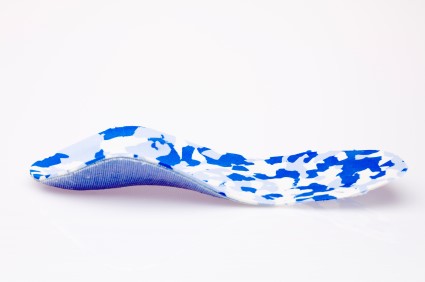 As our feet may develop foot conditions such as the flattening of our arches, consider custom orthotics as a potential treatment option. There exist three different types of orthotics: rigid, soft, and semi-rigid. “Each orthotic is concerned with improving the functionality of a patient’s feet, minimizing the stress forces that could potentially cause pain or deformity.” Orthotics can help address foot problems such as arch pain, plantar fasciitis, and any other pain associated with the feet.
As our feet may develop foot conditions such as the flattening of our arches, consider custom orthotics as a potential treatment option. There exist three different types of orthotics: rigid, soft, and semi-rigid. “Each orthotic is concerned with improving the functionality of a patient’s feet, minimizing the stress forces that could potentially cause pain or deformity.” Orthotics can help address foot problems such as arch pain, plantar fasciitis, and any other pain associated with the feet.
If you are having discomfort in your feet and would like to try orthotics, contact Dr. Nicholas Megdanis from Greater Queens Podiatry PLLC. Our doctor will treat your foot and ankle needs.
What are Orthotics?
Orthotics are inserts you can place into your shoes to help with a variety of foot problems such as flat feet or foot pain. Orthotics provide relief and comfort for minor foot and heel pain, but can’t correct serious biomechanical problems in your feet.
Over-the-Counter Inserts
Orthotics come in a wide variety of over-the-counter inserts that are used to treat foot pain, heel pain, and minor problems. For example, arch supports can be inserted into your shoes to help correct over arched or flat feet, while gel insoles are often used because they provide comfort and relief from foot and heel pain by alleviating pressure.
Prescription Orthotics
If over-the-counter inserts don’t work for you, or if you have a more severe foot issue, it is possible to have your podiatrist prescribe custom orthotics. These high quality inserts are designed to treat problems such as abnormal motion, plantar fasciitis, and more severe heel pain. They can even be used to help patients suffering from diabetes by treating foot ulcers and painful calluses, and are usually molded to your feet individually, which allows them to provide full support and comfort.
If you are experiencing minor to severe foot or heel pain, it’s recommended to speak with your podiatrist on the possibilities of using orthotics. A podiatrist can determine which type of orthotic is right for you and allow you to take the first steps towards being pain free.
If you have any questions, please feel free to contact our office located in Bayside, New York. We offer the newest diagnostic and treatment technologies for all your foot and ankle needs.
Ankle and foot orthotics, known as AFOs, are custom-made inserts. They are shaped and contoured to fit inside a shoe and used to correct an irregular walking gait or provide cushioning. Orthoticscome in a variety of different models and sizes, including over the counter and customizable variants. Customizable ones should be prescribed through a podiatrist who specializes in customized footwear and orthotics design and management.
AFOs are often used by athletes including track and field runners, cyclists, professional dancers, ice skaters, and even golfers. They benefit a lot from custom made AFOs by preventing injuries from occurring and providing cushioning to keep pain levels down to a minimum. Ankle foot orthotics allows for the correct positioning of the feet. Orthotics also acts as shock absorbers to help keep pressure and stress off the foot and ankle. They can also relieve back pain and hip pain while restoring balance and improving an athlete’s performance.
The way they help alleviate pain is by controlling the movement of both your feet and ankles. They are custom designed by a podiatrist or orthopedic specialist to help treat foot problems. These problems include flat feet, spurs, arthritis of the ankle or foot, ankle sprains, weakness, and drop foot, a condition in which the patient cannot raise their foot at the ankle joint.
With custom orthotics, a patient will go through a complete examination of the foot and ankle. This is followed by the ankle and foot being cast and fitted for the proper orthotic. Depending upon the final result of the tests, a stretching treatment is created with specific shoe fitting in mind. After a patient has been fitted to the shoes, adjustments can be made in order to get the perfect fit. Evaluations are then usually set up to monitor the patient in the coming weeks to see how they are adjusting.
AFOs are also available over the counter and are more common than custom fit ones. Athletes that have generally low aches and pains in the foot, ankle, or lower back area can use an over the counter version of these orthotics. Weight is distributed evenly throughout the bottom of the foot thanks to the arch support they give. However, when an injury or ailment occurs, it is usually not enough to try and remedy it with an over the counter version. In either case, a podiatrist will be able to offer the best advice and treatment when it comes to foot and ankle orthotics.
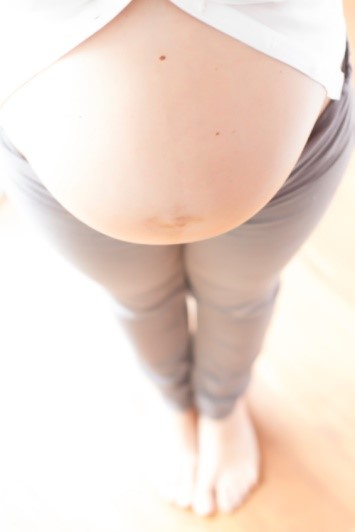 For women who are experiencing or will experience pregnancy, there are many different developments to the body as it changes. Our bodies will begin to create high levels of progesterone, “a hormone that manages fluid retention.” Fluid can begin to accumulate in our legs and feet, especially nearing birth. This leads to our legs and feet swelling, requiring rest and elevation. Make sure to take proper care of your pregnant feet as they are the foundations of our body, especially during such an important time.
For women who are experiencing or will experience pregnancy, there are many different developments to the body as it changes. Our bodies will begin to create high levels of progesterone, “a hormone that manages fluid retention.” Fluid can begin to accumulate in our legs and feet, especially nearing birth. This leads to our legs and feet swelling, requiring rest and elevation. Make sure to take proper care of your pregnant feet as they are the foundations of our body, especially during such an important time.
Pregnant women are susceptible to aching and swollen feet and should be treated with care. If you are seeking treatment, contact Dr. Nicholas Megdanis from Greater Queens Podiatry PLLC. Our doctor will treat your foot and ankle needs.
What foot problems can arise during pregnancy?
One problem that can occur is over-pronation, which occurs when the arch of the foot flattens and tends to roll inward. This can cause pain and discomfort in your heels while you’re walking or even just standing up, trying to support your baby.
Another problem is edema, or swelling in the extremities. This often affects the feet during pregnancy, but tends to occur in the later stages.
How can I keep my feet healthy during pregnancy?
· Wearing orthotics can provide extra support for the feet and help distribute weight evenly
· Minimize the amount of time spent walking barefoot
· Wear shoes with good arch support
· Wear shoes that allow for good circulation to the feet
· Elevate feet if you experience swelling
· Massage your feet
· Get regular, light exercise, such as walking, to promote blood circulation to the feet
If you have any questions, please feel free to contact our office located in Bayside, New York. We offer the newest diagnostic and treatment technologies for all your foot and ankle needs.
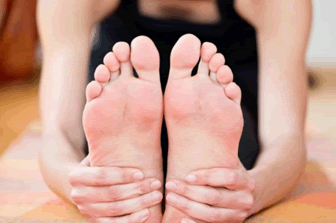 If you’re waking in the mornings with pain in your feet, it may be because you have plantar fasciitis. Plantar fasciitis is described as heel pain that occurs as a result of inflammation and injury of the plantar fascia, which stretches along the bottom of our feet’s soles. Our plantar fascias are “prone to overuse injuries,” and symptoms of the condition include “morning stiffness, stiffness after working out, and pain while walking barefoot.” Treating your plantar fasciitis involves investing in custom orthotics, changing your footwear, anti-inflammatory medication, splints and physical therapy.
If you’re waking in the mornings with pain in your feet, it may be because you have plantar fasciitis. Plantar fasciitis is described as heel pain that occurs as a result of inflammation and injury of the plantar fascia, which stretches along the bottom of our feet’s soles. Our plantar fascias are “prone to overuse injuries,” and symptoms of the condition include “morning stiffness, stiffness after working out, and pain while walking barefoot.” Treating your plantar fasciitis involves investing in custom orthotics, changing your footwear, anti-inflammatory medication, splints and physical therapy.
Plantar fasciitis can be very painful and inconvenient. If you are experiencing heel pain or symptoms of plantar fasciitis, consult with Dr. Nicholas Megdanis from Greater Queens Podiatry PLLC. Our doctor will assist you with all of your podiatric concerns.
What is Plantar Fasciitis?
Plantar fasciitis is the inflammation of the thick band of tissue that runs along the bottom of your foot, known as the plantar fascia, and causes mild to severe heel pain.
What Causes Plantar Fasciitis?
· Excessive running
· Non-supportive shoes
· Overpronation
· Repeated stretching and tearing of the plantar fascia
How Can It Be Treated?
· Conservative measures – anti-inflammatories, ice packs, stretching exercises, physical therapy, orthotic devices
· Shockwave therapy – sound waves are sent to the affected area to facilitate healing and are usually used for chronic cases of plantar fasciitis
· Surgery – usually only used as a last resort when all else fails. The plantar fascia can be surgically detached from the heel
While very treatable, plantar fasciitis is definitely not something that should be ignored. Especially in severe cases, speaking to your doctor right away is highly recommended to avoid complications and severe heel pain. Your podiatrist can work with you to provide the appropriate treatment options tailored to your condition.
If you have any questions, please feel free to contact our office located in Bayside, New York. We offer the newest diagnostic and treatment technologies for all your foot and ankle needs.
 Visiting your podiatrist is especially important if you’ve experienced foot pain that may be chronic. “According to a 2014 survey from the American Podiatric Medical Association, 77 percent of U.S. adults over age 18 have experienced foot pain.” Heel pain, in particular, can be caused by many different reasons, including plantar fasciitis, athletic injury, or achilles tendinopathy. Plantar fasciitis occurs when the band of tissue that runs along the bottom of your foot becomes inflamed, whereas achilles tendinopathy occurs when the Achilles tendon becomes overworked and stressed.
Visiting your podiatrist is especially important if you’ve experienced foot pain that may be chronic. “According to a 2014 survey from the American Podiatric Medical Association, 77 percent of U.S. adults over age 18 have experienced foot pain.” Heel pain, in particular, can be caused by many different reasons, including plantar fasciitis, athletic injury, or achilles tendinopathy. Plantar fasciitis occurs when the band of tissue that runs along the bottom of your foot becomes inflamed, whereas achilles tendinopathy occurs when the Achilles tendon becomes overworked and stressed.
Anyone can wind up suffering from heel pain. For more information, contact Dr. Nicholas Megdanis from Greater Queens Podiatry PLLC. Our doctor will treat your foot and ankle needs.
Causes of Heel Pain
● Heel pain is often associated with plantar fasciitis. The plantar fascia is a band of tissues that extends along the bottom of the foot. A rip or tear in this ligament can cause inflammation of the tissue.
● Achilles tendonitis is another cause of heel pain. Inflammation of the Achilles tendon will cause pain from fractures and muscle tearing. Lack of flexibility is also another symptom.
● Heel spurs are another cause of pain. When the tissues of the plantar fascia undergo a great deal of stress, it can lead to ligament separation from the heel bone, causing heel spurs.
Why Might Heel Pain Occur?
- Wearing ill-fitting shoes
- Wearing non-supportive shoes
- Weight change
- Excessive running
Treatments
Heel pain should be treated as soon as possible for immediate results. Keeping your feet in a stress free environment will help. If you suffer from Achilles tendonitis or plantar fasciitis, applying ice will reduce the swelling. Stretching before an exercise like running will help the muscles. Using all these tips will help make heel pain a thing of the past.
With the advancements in technology and greater knowledge of how muscles and joints work, physical therapists can turn things around dramatically.
If you have any questions, please feel free to contact our office located in Bayside, New York. We offer the newest diagnostic and treatment technologies for all your foot and ankle needs.
| Bayside Office 4401 Francis Lewis Blvd Suite L3B Bayside, NY 11361 Phone: (718) 229-0222 Fax: (718) 717-0275 | Monday: 9:30am - 7pm |
E-mail us with any questions